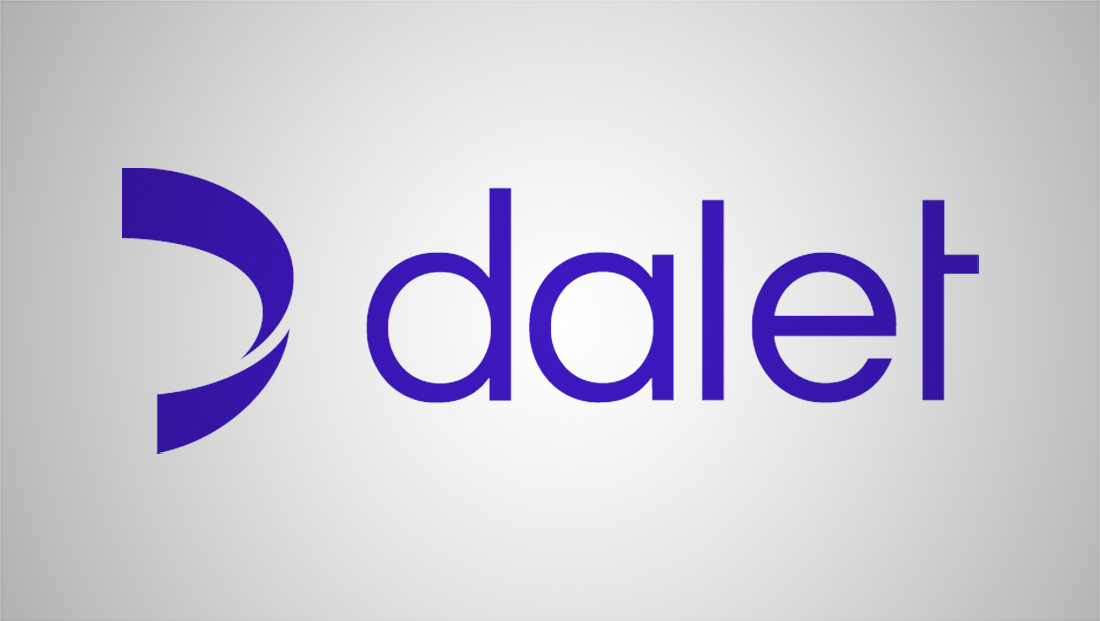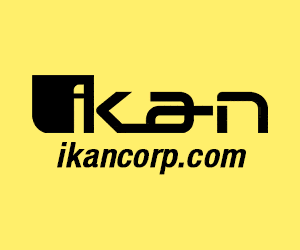Q&A: Dalet CEO Carl Farrell on transitioning with intention while serving a ‘mixed’ customer base

Subscribe to NCS for the latest news, project case studies and product announcements in broadcast technology, creative design and engineering delivered to your inbox.
 With media companies and brands rapidly shifting to cloud platforms, Dalet CEO Carl Farrell sees a company in transition while an industry finds new outlets for monetization and distribution.
With media companies and brands rapidly shifting to cloud platforms, Dalet CEO Carl Farrell sees a company in transition while an industry finds new outlets for monetization and distribution.
In an interview with NewscastStudio, Farrell discusses Dalet’s own transition to becoming a fully cloud-native SaaS provider after three decades in on-prem software.
Farrell says the pandemic accelerated Dalet’s customers’ embrace of cloud technology as it enabled remote collaboration and distributed workflows. He notes the company is focused on helping clients migrate with a product roadmap that spans legacy on-prem systems as well as new cloud-native offerings.
Looking ahead, Farrell expects acquisitions and consolidation to continue among media companies as they seek efficiencies, as well as among software vendors like Dalet looking to expand their platforms.
The interview has been edited for length and clarity.
Walk me through where Dalet is today and what your vision is moving forward with the company.
Dalet is a 30-year-old company, but it’s going through a transition. So, the vision here is to get through the transition to be a fully cloud-native SaaS company as quickly as we can. We’ve executed fairly rapidly now. I’ve been with other organizations who’ve been through this technology transition before.
We’ve been very careful as we’ve gone through the transition to check in with customers on our plans and our roadmap. Does it resonate? Is it the thing that they’re looking for? Checking with people like yourself and analysts. Is the market driving the needs we’re trying to solve?
Part of this is looking at the technology. The foundation of this transition was moving to a single-stack cloud-native product. If you know anything about Dalet, we’ve been on-premise perpetual software. We acquired a cloud product, Flex, several years ago. We have other cloud products, but we weren’t bringing them together fast enough for the needs the market was driving.
It wasn’t until NAB this year that we actually said too much about what we were doing. We’ve released new software, cloud-native software, in 2022 and 2023 along with the vision.
We’ve been able then to provide value to our customers as we go through this transition as well as service our traditional markets and news market, our content owner markets. Now we’ve looked at other markets that we could service: sports leagues, teams and federations, plus government and those type of institutions. More recently, large brands and corporations are now looking at media as a key asset in their business operations. How do you take content and use that content to attract customers, sustain leadership and things like that?
We have to come at this at the other end as going, “Yeah, Dalet was a good company before, but they’re even better now.” I’ve been using the term that we’re a 30-year-old startup. I mean, we really went back to the principles of if we were writing this again, where would we start? But we have 30 years’ worth of experience in customer knowledge.
Being from the world outside broadcasting and then stepping into this role, what has been the biggest surprise or the biggest thing that you have noticed in your time as CEO?
I knew our clients had different views on technology, but one thing that I saw was the effect of COVID on that. So I mean, COVID really accelerated a reaction to, “How do I run something when my people are all over the place? How do I collaborate? How do I move assets around? And then what assets or technology do I do have now in front of me to support that?”
And as they came out of that, I think the education and nervousness and need in the senior management across the whole media space changed. I think they look at technology as not an inhibitor anymore but as a facilitator. There’s always a fear about the cloud. But there’s a better understanding, I think, of what we can do to get to certain end points.
So I think that acceleration was rapid. I was wondering how this industry was going to move, but I’ve seen the movement quite quickly from small customers to very large customers.
In terms of your main client base, where would you say they are in terms of their cloud transformation?
It’s mixed. I would suggest some of the smaller new entries are ahead because it’s a clean sheet of paper. Some of the very large entities have a lot of infrastructure, so you can’t change overnight, right? So they have a lot of investment in hardware, software, people and process.
But they realize that they have to deal with the cost of assets, the cost of workflow, the cost of people, cost of buildings. And they’re dealing with this in very different ways at different speeds. Some people are saying, “Okay, let’s put a brand new system in. Let’s look at a brand new approach and let’s go from A to Z in one big jump.” And other people are going, “Okay, I know where I want to be. What are the steps to get there over the next five, or seven years?” That’s more pragmatic.
I’m seeing a lot more understanding of what the technology can do for their business than before. The other thing I’ve learnt about the industry is the quality that we’re now producing creates so much of a data storage requirement. The cost and maintenance of that — they’ve got to look twice at, “Do I duplicate or can I serve many people with one asset?” So a lot of these things are beginning to resonate.
One thing we’ve noticed is a very heavy reliance on AWS. And all it takes is one AWS outage and suddenly we have a problem. And also — what you were just alluding to, accounting for storing and processing all this data in the cloud — ultimately at some point this will catch up and suddenly they’re going to have a large yearly recurring cloud build for that maybe they’re not accounting for today.
I’ve seen that happen before. That’s exactly what happens. I hate to use analogy; I’m certainly not picking on AWS, but it grows like a weed, right? It just grows, and it’s a silent growth. And as you said, unless you have the infrastructure and the awareness of how to deal with this.
And the other thing I found is that organizations tend to have multiple accounts. So you have to put structure and governance around technology in this new world. And a lot of people forget to do that as well.
It surprises me that there’s not someone spinning up their own broadcast-centric cloud service that is literally from the ground up built for a broadcast. AWS has some pieces inside of Elemental that are for that, but — like how Azure has just gotten rid of their media services unit — all it takes is AWS pivoting and suddenly a lot of that specialization disappears.
We’re still in early days. Everybody’s using it, but not to the scale they will be using it. So whether it’s AWS or someone else, we’re going to see some changes I think, or some consolidation or something, because this is a big industry.
When you consider what the cloud unlocks for Dalet’s roadmap, what are you most excited about or what are you wanting to leverage as you look ahead?
When I entered the company, we had three main products. Galaxy is our on-premise flagship product, leading its marketplace, many generations old. We bought Flex, which brought us into the cloud as a MAM, a native cloud product, and we bought and developed some other cloud-native products.
Our ability now to bring these onto a single technology stack is exciting to me because that brings so many benefits to our customers. It gives them a cost advantage, the ability to put things in one place. It also gives them the ability to disperse workflows, workforce, and centrally manage if they want or manage it around hubs. It’s flexibility.
Galaxy is our big customer base. We’re building a cloud product that sits on top of Galaxy and sits on top of Flex, Pyramid. Pyramid interacts with both 100% cloud and on-prem.
There are not many software companies our size who will go to a fully cloud-native product and be able to take customers with them. It’s normally a reimplementation. So we focus very much on that customer’s journey over a period of years.
We’ll have a 100% cloud-native situation fairly soon, but we’ll still be able to help our Galaxy customers until they’re ready. A lot of times they’re forced off their technology and made to go somewhere. We took a deliberate approach to help them through that evolution. I’m seeing that resonate very strongly with our large customers. And our smaller customers will just go straight to the cloud as they come join. So I’m quite excited about that.
And then our ability to expand what we already have. We have ingest capabilities in our Brio product. We’re releasing at IBC a cloud version of Ingest, which gives us multi-channel elastic cloud ingest alongside what we already have.
Thinking about the non-traditional broadcasters you mentioned, the sports leagues, the corporate entities, for example, what part of Dalet are they most interested in optimizing in their workflows? Is it through Flex? Where is that entry point and where are they seeing advantages?
Flex is the main one. Content management, content distribution. I’ll give an example. Peloton is a customer who I visited in London several months ago.
For me living in Canada, my kids use Peloton, they’ve got Peloton bikes, so I look at them as a hardware gym supplier. They don’t look at themselves at all like that. They’re a media company. I toured their studios. It’s the best set of studios I’d seen outside of North America. They have totally automated spectacular studios, and they’re creating content all the time.
Their business model has shifted now that the add-on is the hardware and the subscription is the content and the music. So the media and the content they’re managing, moving at a fast pace for a subscription base is how we’re helping these kinds of organizations.
The same with the different football leagues. How do you attract and retain supporters? You give them content, you give them stats, you give them figures, you tell about upcoming games. It’s all media. It’s all related content to attract season ticket holders or whatever to a league or to a team. Whether it’s cricket, football, we’re in all of those particular areas.
But I think the big brands are really pushing onto this now. They’re looking at how they’re marketing their brand and the amount of content they need now to market, and they need a solution to manage that content. And we’re an ideal solution with Flex, which installs quickly and scales from two users to thousands of users in the cloud. So it’s opened up a very different world for us.
In terms of that world, are they looking for similar workflows as broadcast, are they needing more custom workflows, or are they bringing in ad hoc workflows? Where are they in kind of that picture?
I’m not an expert here, but I see a lot of overlap with traditional workflows and content management. If you look at Netflix and Disney, somebody like that, it’s a similar kind of workflow inside of a MAM product.
They are looking for flexibility. They’re looking for intuitive, agile, fast. The ability to customize workflows but not customize software. Nobody wants to touch software anymore, right? So you have to provide agile software that’s good enough for traditional workflows, and that’s what we’re very much focused on.
And we have amended our approach so that we have different flavors of different workflows for different industries. We’ve recognized there are some subtle differences, and we’ve tried to take a step towards how we can kickstart a company in non-traditional areas with the workflow. But it’s all the same software.
So shifting topics, this year has been fairly quiet on M&A. It’s something that people expect there’d be a little bit more, but obviously with rising interest rates it hasn’t happened. What is your view, especially as someone with more of a finance background? What is next in this industry? Is next year going to be a choppy time where we’re going to see companies moving around and changing hands or are we pretty set because everyone is on some form of a cloud journey?
I think the opportunity presents itself for more consolidation, especially in North America which I’m more familiar with, where larger organizations can acquire smaller organizations.
What the newer cloud technologies like ours provide is a more rapid integration approach. You’re not acquiring an island of technology and people and content anymore. You can bring them into the fold; you can bring their assets in and you can centrally manage on one system. As you evolve people into a more broader set of workflows and rules, then the change management becomes more standardized around that.
I see an opportunity with more of that in late this year, early next year. I think we’ll see some more transitions. And similarly in the software world. I think in our own world we have some larger organizations, some smaller, and it’s an opportunity. Some people didn’t ride the COVID situation and then an up and down situation with interest rates very well into 2022 and 2023.
I think those with more capital around them, the larger companies — or there’s a lot of money outside of the industry that wants in the industry — I think we’ll see more acquisitions and more consolidations in our world as well.
So I don’t think we’re going to be a quiet space on both ends. Things are settling down. There are some new norms. The interest rates will get back to a point, but people carry on now. There’s a lot of investment going into media from larger organizations, which will open up the ability for them to acquire.
On the software and delivery side, people like ourselves, there’s an opportunity there for those who have the wherewithal to acquire the right things at the right time. So I think it’s going to be an interesting couple of years.
What is the state of play as we enter the final quarter of this year and next year?
The key thing for us is to continue to execute on time. We’re releasing some significant product at IBC. NAB is coming up next year. There’s a lot of things that we will bring to marketing 2024. So the key thing for us is to stay focused, stay calm on the path.
Customers continue. We’re checking back with customers all the time. We have customer advisory boards and things like that that we’re doing regular check-ins. So we will make some slight adjustments as our customers tell us we need to as we go forward.
Our sales teams have been very busy with existing customers and new customers. We have some exciting sales cycles that we’re trying to finalize. It’s this time of the year that you tend to finalize a lot more sales activity than the first half of the year.
And I think the other thing we’ve put a little bit more focus on is partnering in 2023. I mentioned change management. As we grow, we need to bring to the table more expertise than just ourselves. So our ability to partner with key organizations and also to integrate more seamlessly to key technologies is what the market’s looking for.
Subscribe to NCS for the latest news, project case studies and product announcements in broadcast technology, creative design and engineering delivered to your inbox.






tags
Amazon Web Services, AWS, AWS Elemental, Carl Farrell, cloud, Content Distribution, Dalet, Dalet Galaxy Five, Dalet Galaxy xCloud, merger, trans
categories
Content Delivery and Storage, Executive Q&A, Heroes, IP Based Production, Media Asset Management, Thought Leadership, Voices